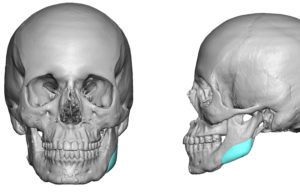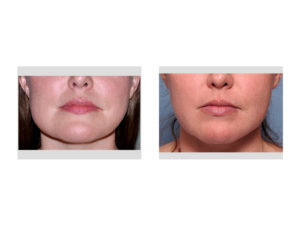Background: The most common method of corrective lower jaw surgery is the sagittal split ramus osteotomy. (BSSRO) While initially described over half a century ago, it remains the cornerstone of lower jaw repositioning surgery. It is an incredibly clever oseotomy design that I still consider a marvel of craniofacial bone surgery and remains technically challenging to perform even after having one the operation for decades.
Longitudinally or sagittally splitting the mandibular ramus into proximal and distal segments allows the toothbearing portion (distal segment) to be moved independently of the proximal (jaw joint containing) segment. Once the teeth are set into the desired bite, the overlapping proximal and distal segments are put back together allowing for maximal bone contact to expedite bony healing.
But the proximal mandibular segment, which provides the shape to the jaw angle, is largely stripped of its soft tissue attachments in the execution of a BSSRO. This partially devascularizing effect can cause the shape of the bone to undergo some postoperative remodeling. This can cause the shape of the jaw angle to change. While it doesn’t always occur it is probably an under reported aesthetic bony change.
Case Study: This 35 year-old female had a prior history of a mandibular osteotomy to correct a malocclusion accompanied by a sliding genioplasty. While this gave her a good bite it left her with facial asymmetry which was most pronounced at the jaw angle areas. She did have treatment with liposuction and fat grafting into the right jaw angle but this did not improve her facial asymmetry adequately.


Deformations of the jaw angles can occur from the BSSRO procedure. The bone may heal perfectly but there can still be a change in the shape of the jaw angle due to bony resorption. Restoration or enhancement of jaw angle shape can be done with an implant. Whether the jaw angle implant would need to be custom or not depends on the degree of bony jaw angle deformity.
Highlights:
1) Jaw angle deformation and asymmetry is not rare after sagittal split mandibular osteotomies.
2) Asymmetry of the jaw angles is best assessed by a 3D CT scan to develop an accurate appreciation of their bony differences.
3) A custom jaw angle implant is the best method to correct bony angle asymmetry.
Dr. Barry Eppley
Indianapolis, Indiana


